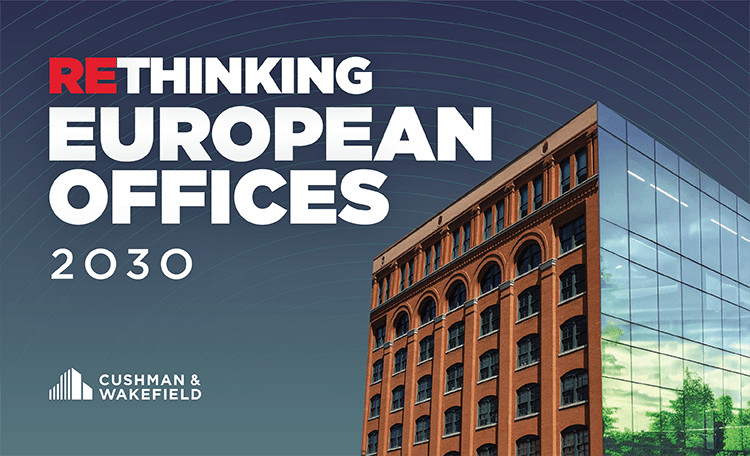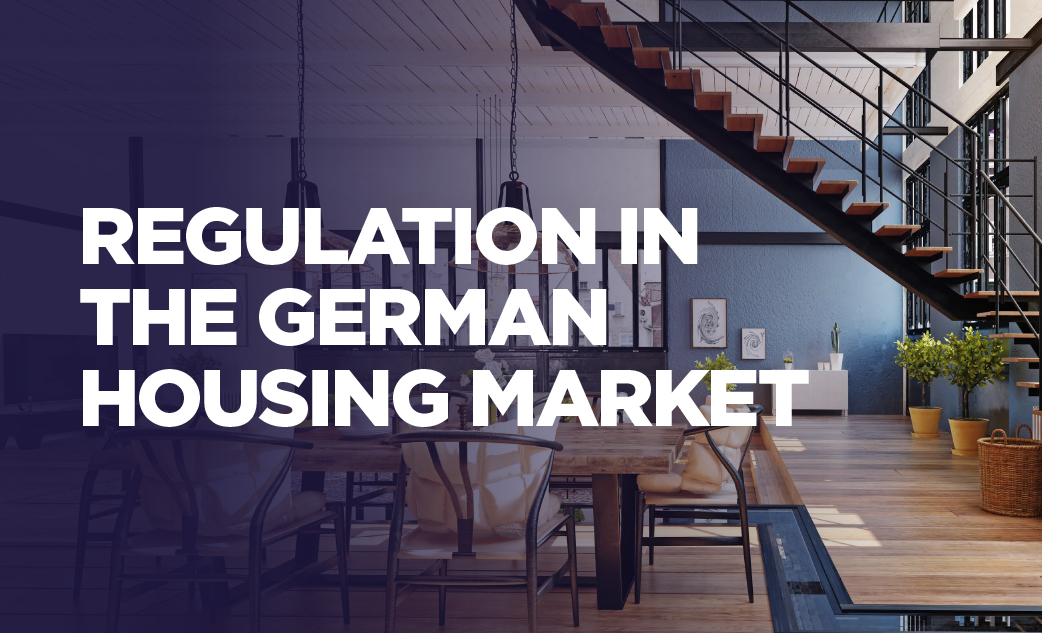- Frankfurt/Rhine-Main is the second-largest market in EMEA, Berlin/Brandenburg is already an established market
- London is expected to be the first EMEA market with an operational capacity of 2 GW in the next 3–5 years, with Frankfurt likely to follow soon
- Strong pipeline: Helsinki and Cardiff-Newport are emerging as significant new markets
Cushman & Wakefield, one of the world's largest real estate consulting firms, estimates the data centre capacity in the EMEA region to be a total of 21 GW by the end of 2024. This represents a 9 percent increase in operational capacity and a 16 percent increase in the pipeline (under construction and planned) compared to the previous year. While the established FLAP-D markets (Frankfurt, London, Amsterdam, Paris, and Dublin) continue to dominate in terms of both operational capacity and overall market size, operators are increasingly focusing on emerging markets such as Helsinki.

Andrew Fray, Head of EMEA Data Centres at Cushman & Wakefield, said: “Most data centre markets continue to face significant challenges, including limited land availability, power constraints, and strict sustainability regulations, which is impacting costs, timelines and significantly investment uncertainty for both operators and investors.
Fray continued: “Ironically, despite being characterised as a threat in some quarters, the emergence of DeepSeek may offer a solution to some of the energy demands associated with data centres. By reducing the power required for AI operations, it could contribute to more sustainable and cost-effective data centre infrastructures. Some of the development pipeline may be re-evaluated but the bigger picture is that competition in the AI space was inevitable and is fundamentally good for the market. It is notable that DeepSeek has become a significant topic so quickly, despite having no prior track record and facing data security concerns, but its presence undoubtedly adds to the market and will drive further innovation.
Various Categories of Market Maturity – Market Overview
- Powerhouse (over 900 MW): London, Frankfurt, Dublin, Paris, Amsterdam, and Milan
- Established Markets (300-900 MW): Helsinki, Madrid, Abu Dhabi, Dubai, Oslo, Johannesburg, Cardiff-Newport, and Berlin
- Developing Markets (150-300 MW): Stockholm, Zurich, Warsaw, Tel Aviv, Copenhagen, Reykjavik, and Cape Town
- Emerging Markets (<150 MW)
1. Powerhouse: London, Frankfurt, Dublin, Paris, Amsterdam, and Milan
These six markets together account for nearly half of the operational capacity (4.4 GW) in the EMEA region and more than 50 percent of the capacity under construction and planned (5.8 GW).Andrew Fray: “Regardless of where the demand is coming from, AI data processing takes place in data centres. The region’s largest ‘powerhouse’ markets account for nearly 6GW of pipeline supply, fuelling broad market growth across the region, and new construction activity is set to double current capacities. Sustainability efforts continue to accelerate, with operators adopting green hydrogen, waste heat utilisation, and renewable energy mechanisms, whether directly or indirectly. Meanwhile, emerging markets and remote campuses sitting outside the established metropolitan areas are also set to completely reshape the data centre landscape.”
London will become the first EMEA city market to reach 2GW in operational capacity over the next 3-5 years. It has 1.44GW of operational capacity and a pipeline of 1.5GW set to be delivered (265MW under construction, 1,260MW planned). Some 53 operators have deployed 135 data centres and colocation operators continue to dominate in London. While power constraints are a significant issue in London, the UK Government has designated UK data centres as critical national infrastructure, and revised planning policy, providing clear signals of stability and growth for investors.
Second-placed Frankfurt has a strong 1.3GW development pipeline. The market is primarily composed of colocation providers including NTT, Equinix, Digital Realty, and CyrusOne. CloudHQ also has significant development plans.
Simon Jeschioro, Head of Capital Markets & Investment Advisory and Head of Specialist Markets Germany at Cushman & Wakefield, said: Frankfurt remains a leading market due to its low-latency connectivity and role as an interconnection hub. Frankfurt's central location in Europe makes it a prime hub for data traffic. It is home to DE-CIX, one of the world's largest internet exchange points, providing extremely resilient access to international networks. The city benefits from a high level of power supply security. However, the exponential growth of the data centre sector in has led to constrained power and land availability and is restricting its natural growth projections. Limited power and land within the city have prompted regional expansion into the Rhein-Main area, encompassing Offenbach, Mainz, and Darmstadt, also Hattersheim und Hanau’s importance has been growing. This region now hosts key Availability Zones for major cloud operators. Despite demand being ever-present, according to data from DC Byte, 2024 registered the fewest number of schemes initiated since 2016.
In line with the EU’s Energy Efficiency Directive, the Energy Efficiency Act (EnEfG) mandates that data centres above 300kW recover and reuse their waste heat. It encourages integrating excess heat into local district heating networks, especially those using renewable energy sources. Equinix plans to provide around 1,000 homes with heat from its data centres by early 2025. Experts claim that, by the end of the decade, all the city’s heating needs could be met by excess heat from data centres. However, in rural areas, many heat recovery projects are delayed or cancelled due to the challenge of securing a reliable customer base in sparsely populated areas.
Third-placed Dublin’s pipeline at 812MW is heavily constrained by lack of land, power and substation upgrades. Paris moved up a place to EMEA’s 4th largest market, overtaking Amsterdam, thanks to consistently high operational capacity growth, 32% up year-on-year, and a fast-growing pipeline of 1,040MW. France's environmental regulations are set to deliver carbon neutrality by 2050 so sustainability will be pivotal for expansion in the city and numerous data centres in Paris are being designed to operate using 100% renewable energy.
Amsterdam, with just 444MW in its pipeline, is suffering lingering effects of the 2019 moratorium, stringent regulations, and political opposition. Nationwide restrictions on hyperscale centres and Amsterdam's local limits on new developments have shifted demand to other European cities, notably Paris, despite designated areas like Haarlemmermeer and Eemshaven. Milan continues to put pressure on the FLAP-D markets with 820MW in pipeline.
2. Established Markets: Helsinki, Madrid, Abu Dhabi, Dubai, Oslo, Johannesburg, Cardiff-Newport, and Berlin
About 13 percent of the total operational capacity in the EMEA region is accounted for by these markets. Together they have 1,244MW of live capacity, and are on track to more than double in size if the development pipeline (2,180MW) is built out over the next few years. Many operators are expanding their presence or considering entry into these markets due to strategic locations and available infrastructure for data centre operations.Berlin, for example, offers a significant alternative to Frankfurt. Over the past 12 months, Berlin’s operational data centre capacity has remained constant. Whilst the volume under construction is also very low (8MW), the committed (213MW) volume has increased. This growth is driven by companies such as Vantage Data Centres, Yondr, Data Castle, Prea, and NTT Global Data Centers committing to new projects over the past 12-18 months.
In August 2023, Google opened a new cloud region in Berlin-Brandenburg, which spurred further developments. Colocation providers also expanded, enabling quick access to cloud infrastructures.
“Berlin's tech-focused economy, the BCIX internet exchange, and relatively lower land prices compared to Frankfurt make it a viable option. Despite power constraints, Brandenburg's wind energy contributes to decarbonisation. Berlin’s relatively affordable real estate, skilled tech workforce, and strategic location will also continue to support market growth,” says Simon Jeschioro.
Helsinki is a new entrant to this category having grown significantly year-on-year, both with capacity going live and the pipeline growing significantly to 358MW. The Finnish capital recorded significant growth over the past year, reaching in 594MW total capacity by the end of 2024 – putting it ahead of other Nordic markets, Oslo and Stockholm. Helsinki has the third most capacity under construction (210MW) in EMEA, while the wider Nordic region accounts for nearly a quarter of capacity under construction across EMEA.
Another new entrant is Cardiff-Newport, which Cushman & Wakefield identifies as an area of high growth in the UK. Though it has just 87MW currently operational, it has a large pipeline of 231MW. Microsoft and Vantage already have significant data centres there, new UK operator Latos has announced plans for a 90MW data centre, and in October a large data centre and renewable energy park was approved. It will have a battery storage capacity of 1,000MW making it one of the largest battery storage facilities in the world.
3. Developing Markets: Stockholm, Zurich, Warsaw, Tel Aviv, Copenhagen, Reykjavik, and Cape Town
These centres, spread across three continents, already accounted for 8.3 percent (785 MW) of the operational capacity in the EMEA region by the end of 2024, up from 7.7 percent in the first half of 2024, with a continuing upward trend. The pipeline in these seven markets totals 815 MW.
4. Emerging Markets: Vienna, Lagos, Barcelona, Riyadh, Brussels, Munich, Istanbul, Zaragoza, Marseille, Athens, and Lisbon
These markets are in their early development stages, yet many data centre operators find them attractive due to business-friendly environments, increasing consumer demand, suitable land, available power, fibre connectivity, and the establishment of a new cloud region. Vienna, Lagos, Barcelona, Riyadh, Brussels, Munich, Istanbul, Zaragoza, Marseille, Athens and Lisbon. Together, they account for less than 6.5% of the total operational capacity (608MW) in EMEA.
Read the full study here.






